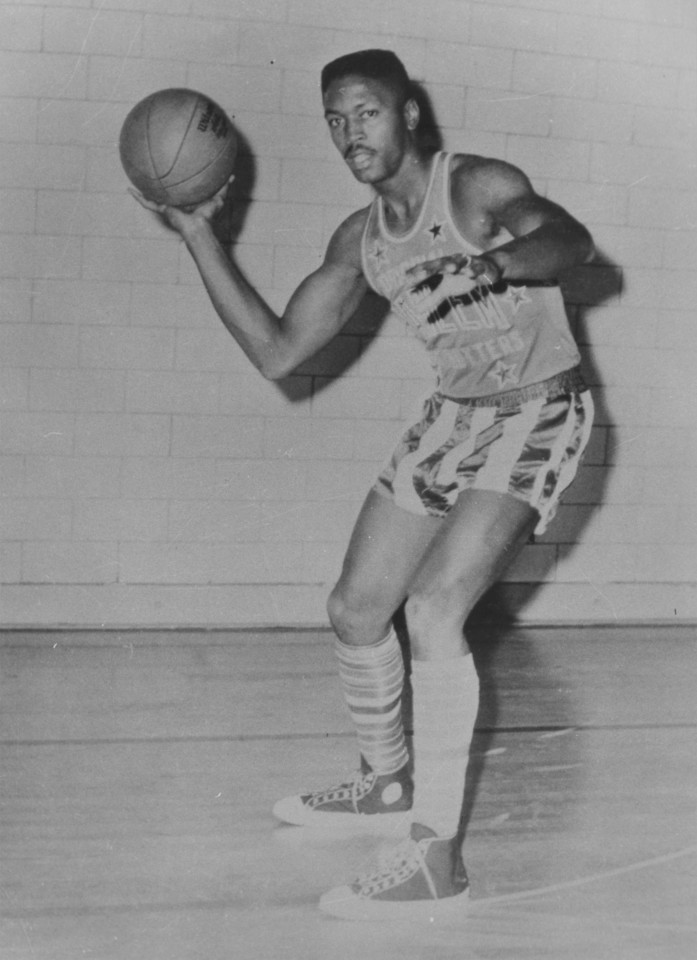
He was a Mr. Basketball from Crispus Attucks High School, then a starter at Indiana University and later a Harlem Globetrotter.
That should be enough to fill the resume of any basketball player from any era but it’s an incomplete curriculum vitae for Hallie Bryant, whose popularity and influence has ranged far beyond playgrounds and hardwood courts.
Bryant stands alone in the history of Hoosier Hysteria for the unique combination of his experiences. Several high school players have been voted Mr. Basketball since the award’s inception in 1939 – Bryant is the oldest living recipient of the award, by the way. Many have played collegiately in the state. A few have played for the Globetrotters.
Bryant alone, however, claims that particular trifecta. Tack on the career he’s built away from playing the game as a lecturer, motivational speaker and author – an “edutainer,” as he puts it - and his singular status is secure for the ages.
Singular, but universal as well. He can relate to virtually everyone. Maybe that’s because he’s seemingly met nearly everyone. When he glides into poetry and philosophy in his conversations, it comes as naturally as breathing.
“I see myself in any living person,” he says. “Somewhere along the way, I’ve been there.”
*
Bryant’s path goes back a long way, to a distant place. He’s a byproduct of the “great migration” in which an estimated 6 million African-Americans fled the Jim Crow era of the South to seek a better life in northern cities. He isn’t alone among those who had a substantial impact on Indiana’s basketball heritage. Oscar Robertson was born in Tennessee. George McGinnis was born in Alabama. Their fathers moved their families to Indianapolis just as Bryant’s did from Calhoun Falls, S.C. when Hallie was eight years old.
Life there had been good for Hallie, filled with fishing and hunting and roaming the countryside while his father and grandfather worked the farm owned by his namesake grandfather. But his mother had passed away when he was five and his father decided to move his five children to Indianapolis, where his second wife’s sister lived, and take a job at Riley Hospital as a custodian.
The Bryant’s first residence in the city was on Hiawatha Street in an area since been bulldozed to clear space for the IU medical center north of the IUPUI campus. Theirs was a shotgun house typical of that era, consisting of two bedrooms, a living room with a sofa that doubled as a bed and a kitchen. It was heated by a potbelly stove, fueled by coal. It didn’t have running water at first, but the backyard contained the other necessities: an outhouse and a water pump.
They got by. Got by just fine, in fact, because Bryant’s father, Calvin, made sure of it. As a child, Hallie didn’t know what he was missing. As an adult, he appreciates what he had.
“To me, it wasn’t a house, it was a home,” he says. “You can be in a mansion and it wouldn’t be like being in a home full of love and care and guidance. It’s a mental thing as far as I was concerned.”
Bryant now lives in a modern, custom-built home on the near north side of Indianapolis, no more than five miles to the east from where he first lived in the city. But the roundabout road from one house to another – one home to another – was a long one.
Hallie knew nothing of basketball in South Carolina, but quickly made its acquaintance in Indianapolis. Sitting inside his grade school classroom at School 24 on the near west side, he could stare right onto the weathered outdoor court at Lockefield Gardens, popularly known as the “Dust Bowl” because its original surface was dirt. It played a siren song for him.
“You heard kids having fun there,” he recalls.
Bryant wanted in on it. He started by throwing tennis balls through the iron hoops. As he grew taller he began shooting basketballs or “anything that was round.” He had to practice at odd hours when the older guys weren’t playing, which often meant taking the court late on summer nights under the illumination of moonlight. On the occasions he couldn’t see the rim, the swish of the net provided all the necessary feedback.
He went to bed at night looking forward to every sunrise so he could get up early and shoot some more. James “Bruiser” Gaines, a local police officer for whom a park on Tibbs Ave. is named, would have a ball waiting for him by 7:30. Gaines also patrolled the area and made sure the park was a safe haven for kids in the neighborhood.
Bryant began getting into the Dust Bowl games as he approached high school age, and it wasn’t long before he was dominating them. By the time he was a senior he was showing the ropes to an eager, talented freshman: Robertson. The two spent many late-night hours shooting or going one-on-one, with the older Bryant knocking the future legend around a bit to give him an idea of what was coming. The residents in the apartment buildings nearby offered mild complaints about the noise of the bouncing ball but maintained perspective.
“They wanted to go to bed, but they could see we were good kids and not causing any trouble,” Bryant says. “They knew we were better off being there than out in the streets.”
The time Bryant put into basketball was reflected by his career at Attucks. He had grown up listening to state tournament games on the radio before the family could afford a television, with announcer Luke Walton painting a picture with words amid screaming fans. It instilled dreams in boys all over Indiana, none more than Bryant.
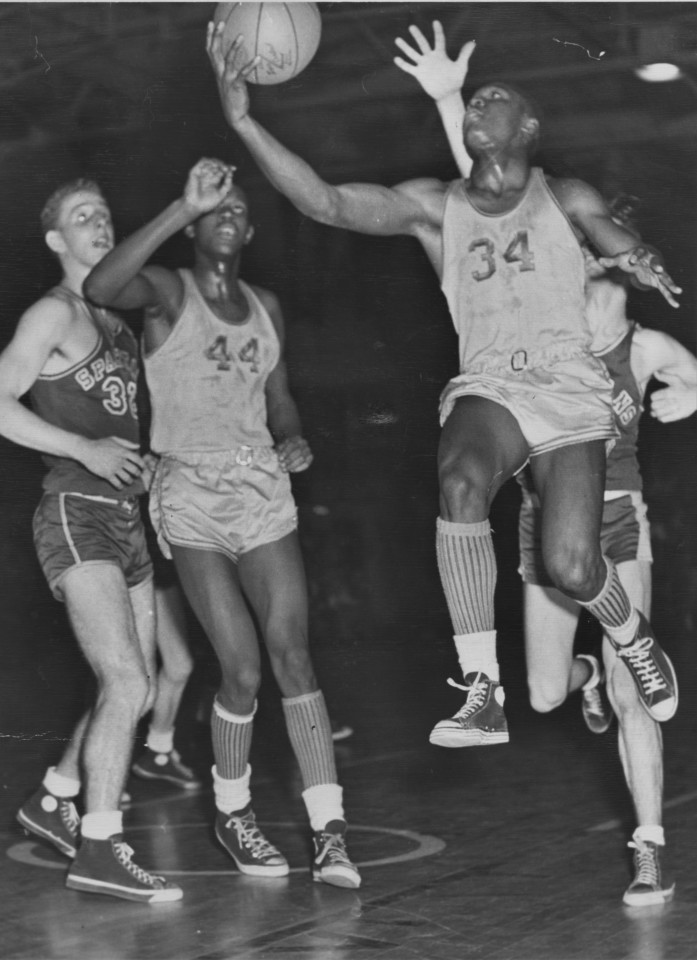 He started for Attucks as a sophomore, scoring 10 points in an afternoon semifinal game of the state tournament when the Tigers lost to Evansville Reitz. He didn’t get back to the finals as a junior or senior but put fresh chapters in the records book for single-game, season and career scoring along the way. He scored 43 points in his final regular season game, 36 in the final game of the sectional, and 37 in the final game of the regional.
He started for Attucks as a sophomore, scoring 10 points in an afternoon semifinal game of the state tournament when the Tigers lost to Evansville Reitz. He didn’t get back to the finals as a junior or senior but put fresh chapters in the records book for single-game, season and career scoring along the way. He scored 43 points in his final regular season game, 36 in the final game of the sectional, and 37 in the final game of the regional.
Attucks was eliminated by Shelbyville, 46-44, in the semi-state in Bryant’s senior season. He scored just seven points in a slowdown game against a defense designed to contain him, a stunning and inappropriate end to his high school career.
Along the way he had set city scoring records for a single game (43 points, three times), a season (569) and a career (1,408). He also ranked in the upper fourth of his class academically, never missing a day of school in four years, and was widely recognized for his citizenship. Local sportswriters could hardly contain themselves in expressing their admiration, and not just for Bryant’s basketball acumen.
Jimmy Angelopolous of the Indianapolis Times, freelancing for a national magazine, wrote, “The goodwill in cementing race relationships by Bryant’s never-changing mental attitude has had immeasurable value. To say Bryant’s behavior on and off the floor was a credit only to the Negro race would be severely breaching the dignity of many. Bryant is a credit to any race.”
He went on to become the first Mr. Basketball to be voted “Star of Stars” in the annual all-star series with Kentucky, in both the official game in Indianapolis and an independently sponsored follow-up in Louisville. He scored 21 points in 90-degree heat inside Butler’s fieldhouse despite sitting out the second quarter. He scored 30 points in the second game in Louisville, including the game-winning basket after stealing an inbound pass.
Bill Shover, the director of the Star’s all-star game from 1952-62, recalls Bryant’s reluctance to even speak into the public address microphone upon accepting the award in Indianapolis.
“He was supposed to say something, but he barely stammered out a thank you,” said Stover, who at 91 lives in Phoenix and still talks with Bryant a couple of times per month. “With all the adulation he got, he was very quiet and showed no ego. Just a very good young man.”
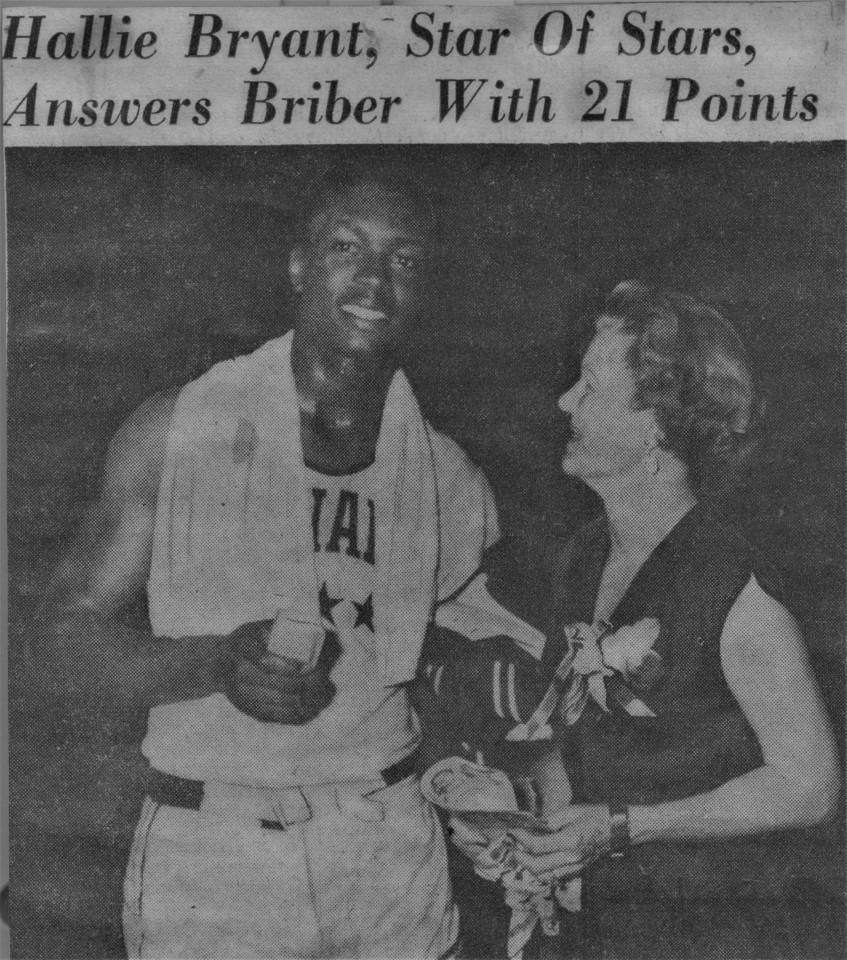 Bryant’s standout performance is practically a footnote to the game now, however, because of the typed threat he received at team headquarters at 5 p.m. the day before the game. It warned that either he or a member of his family would be injured if he played in the game – but added he would receive $500 via mail if he sat out.
Bryant’s standout performance is practically a footnote to the game now, however, because of the typed threat he received at team headquarters at 5 p.m. the day before the game. It warned that either he or a member of his family would be injured if he played in the game – but added he would receive $500 via mail if he sat out.
In the context of its time, the threat was taken more seriously than it might have been otherwise. Just a couple of months earlier the Indianapolis Olympians, the city’s first NBA franchise, had gone out of business because their star players, Alex Groza and Ralph Beard, had been banned for taking money from gamblers while playing at the University of Kentucky. Sports gambling was rampant at the time – one lower-level corner seating area at Butler Fieldhouse was well-known as the gathering place for bettors – so it wasn’t considered unrealistic that a threat would be made against a high school player.
The Star certainly didn’t take it lightly. Immediately underneath the banner headline ROSENBURG SPIES EXECUTED, it ran another all-caps banner header: HALLIE BRYANT THREATENED.
Bryant shrugged off the threat without much concern, but the team was moved from the Central YMCA to the Claypool Hotel for safety purposes and additional police officers were assigned to the game to protect Bryant and his family members.
All these years later, the matter is a safe source of comedy. Shover often teases Bryant for writing the note so the team could be moved to a better hotel.
*
Bryant was likely the most heavily-recruited high school player in the state’s history to that point. He had received countless offers, including one from UCLA’s young coach, John Wooden, but confined his serious interest to Indiana, Michigan State, Michigan and Purdue before choosing IU. There was immense pressure on Bryant to stay close to home and the Hoosiers had won the NCAA tournament that year, so it seemed logical.
Whatever his decision was going to be it qualified as big news, as evidenced by the story in the Star two days after the all-star game.
“Hallie Bryant, Indianapolis’ fabulous ‘Mr. Everything’ in the high school basketball line, has decided to drag his gear down to Indiana University for perhaps another direct onslaught on whatever unused records happen to be lying around,” Bob Collins wrote.
Collins later added, “No youngster around these parts ever stomped on the record books in quite the fashion Hallie did,” and he also stated Bryant “could rattle off 20 points with a rapidity and ease that never failed to startle even the folks who had watched him do it time and again.”
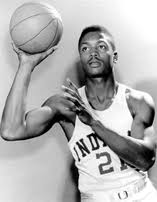 Bryant’s career in Bloomington didn’t work out as hoped. He played mostly off the bench as a sophomore and was shuttled back and forth between guard and forward. He averaged 14.4 points as a junior, a solid number in that era, but dropped to 11.1 as a senior. He did set a school record for free throw accuracy, and the Hoosiers tied for the Big Ten title with Michigan State his final season. Only one school from each conference could go to the NCAA tournament in that era, though, and IU lost out because it had competed in it more recently than the Spartans.
Bryant’s career in Bloomington didn’t work out as hoped. He played mostly off the bench as a sophomore and was shuttled back and forth between guard and forward. He averaged 14.4 points as a junior, a solid number in that era, but dropped to 11.1 as a senior. He did set a school record for free throw accuracy, and the Hoosiers tied for the Big Ten title with Michigan State his final season. Only one school from each conference could go to the NCAA tournament in that era, though, and IU lost out because it had competed in it more recently than the Spartans.
Bryant holds firm to a positive outlook in his daily life and doesn’t like to dwell on negative events. He earned a degree and has been inducted into Indiana’s Athletics Hall of Fame and is satisfied to leave it at that.
“I respect (coach) Branch McCracken and his family,” he says. “I won’t go there. My experience with Branch as far as basketball was OK. I let sleeping dogs lie.”
McCracken, though, might have had regrets. A few years after Bryant graduated, he saw his former coach in a hallway in the Union building. McCracken, he recalls, threw an arm around him and apologized, saying, “Hallie, I’m so sorry. I just didn’t know you.”
Bryant was not drafted by an NBA team, but had a tryout with St. Louis. Hawks coach Alex Hannum praised him in a newspaper article for his performance in practice and he scored 14 points and hit the winning shot with a long one-hander in a low-scoring intrasquad game. He didn’t survive the final cut, however.
It might have been the simple fact the Hawks were an outstanding team that would go on to win the championship that season and had precious few job openings. The NBA consisted of only eight teams at the time and rosters were limited to 10 players after December 1. First-round pick Win Wilfong was the only draftee retained.
It also might have had something to do with race. The Hawks had no black players on their roster the previous season when they won the Western Division title. They kept just one, Worthy Patterson, who was three years out of college and just recently out of the Army, at the start of the 1957-58 season, but he lasted just four games before being let go.
It doesn’t matter now. Getting released turned out to be the best thing that could have happened to Bryant.
Hawks management recommended him to Globetrotters owner Abe Saperstein. Bryant’s high school teammate, Willie Gardner, had played for the team and provided another connection. After a two-year hitch in the Army, one of which was spent in Korea, he signed on for what would become a perfect marriage. Hallie had been a dreamer as a kid. He let his imagination run wild amid the cadence of the late-night swish of the net on the Dust Bowl court, or while watching airplanes fly overhead or watching Hollywood stars in movies. There was a world out there he wanted to explore, and the Globetrotters provided the vehicle.
As great an accomplishment as playing in the NBA would have been, this was better. Rather than Detroit or Syracuse, road trips took him to 88 countries. He didn’t have to worry about getting cut and injuries were rarely a factor. Best of all, he got to interact with people in far-flung places, some of whom had never seen a black person.
He recalls kids in some countries rubbing his skin to see if the blackness came off. One evening when he was walking the streets of a Communist country, he heard footsteps behind him. He thought about picking up his pace but decided to hold back. It turned out to be an older couple. They barely spoke English, but the three managed a pleasant conversation.
Over time, experiences such as those transposed his personality, dissolving the barrier of his introversion and remaking him as a communicator, entertainer and worldly philosopher.
Bryant’s specialty with the Trotters was as a long-shot specialist and participant in the Magic Circle, the pre-game ritual in which six players performed ballhandling and passing wizardry to the soundtrack of the Brother Bones version of Sweet Georgia Brown. It was a position of honor, one that enhanced his job security and became his calling card.
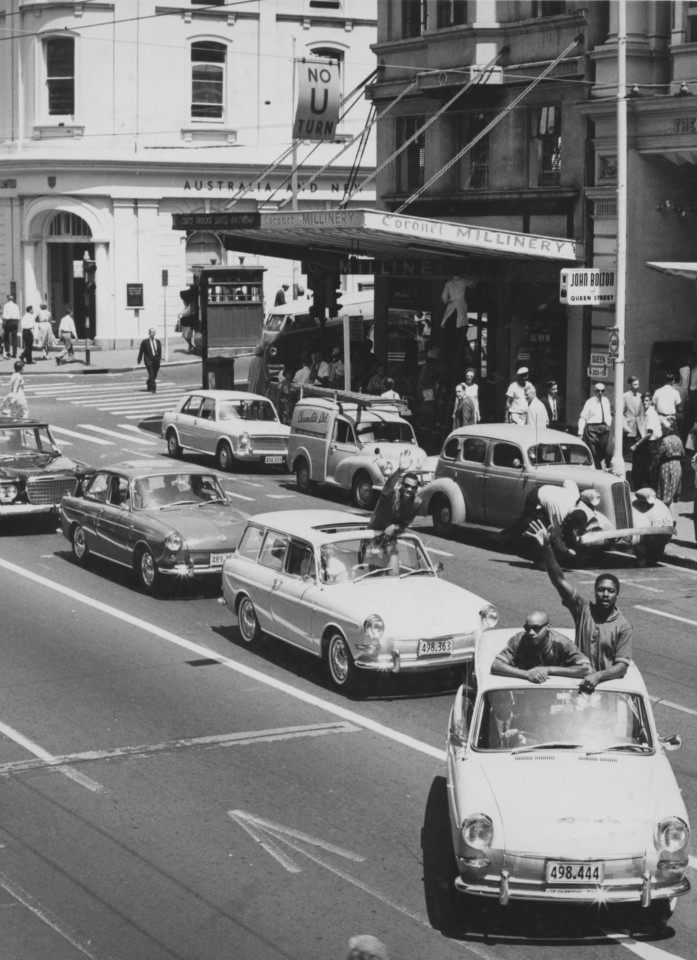 He played 13 seasons with the Trotters, then worked for them for 14 more years in public relations. In the off-seasons and in retirement he took a one-man ballhandling and passing act to television studios, corporate gatherings, charity functions, senior citizen centers, shopping malls and camps. He was an institution at the Taylor University basketball camp in Upland for more than 50 years, “edutaining” the kids.
He played 13 seasons with the Trotters, then worked for them for 14 more years in public relations. In the off-seasons and in retirement he took a one-man ballhandling and passing act to television studios, corporate gatherings, charity functions, senior citizen centers, shopping malls and camps. He was an institution at the Taylor University basketball camp in Upland for more than 50 years, “edutaining” the kids.
He considered his act a passport of sorts, a way to introduce the Trotters or himself to strangers and interact with them in a lighthearted, positive manner. He always made it a point to involve others as well, regardless of age or status. One time in Phoenix, Shover watched him bounce a ball off the posterior of Ethyl Kennedy, widow of former Presidential candidate Robert Kennedy, at a fundraising event. She loved it.
As performing became more difficult with age and parts replacement surgeries, Bryant turned to public speaking. Letters thanking him for his appearances from groups such as the NCAA and Cook Incorporated hang on the office wall in his basement. Lining the walls in the hallway and his man cave are photos of him with the likes of Robertson, Gardner, Wilt Chamberlain, Meadowlark Lemon, Ed McMahon, and various business leaders as well as framed newspaper clippings.
He’s written a book, “Hallie’s Comet: Breaking the Code” - Code being an acronym for coordination, organization, direction and energy. In conversation he’ll slip into poetry and drop pearls of wisdom or a joke at any given moment, every syllable of it upbeat.
“We don’t know enough to be a pessimist,” he says.
It’s also important, he says, to quiet the “static in the attic,” to remember we’re always prone to sending and receiving negative signals in our brain, not unlike a radio station. “Don’t deny it, don’t identify with it, get past it,” he advises.
He learns best, he says, by TSL: “Tell me, show me, let me.”
Crowe, his coach at Attucks, was a more polished version of his father, a man who personified “The Four F’s” - he was firm, fair, flexible and frank.
Indiana’s basketball heritage laid down quite a path for the farm boy from South Carolina. It fueled journeys that took him around the world and a few miles across town, both reflecting a life he barely could have imagined on those moonlit nights when he made the Dust Bowl nets hum.
Now, at age 86, he tries to give back when he can. The Dust Bowl is long gone, but other parks with basketball courts have been built around the city, some just a short distance from his home on the near northside. He remembers how he once sat around and talked with older players and adults who hung around Lockefield Gardens underneath a tree near the Dust Bowl court. He calls it “Shade Tree University.” Some life lessons were learned that way.
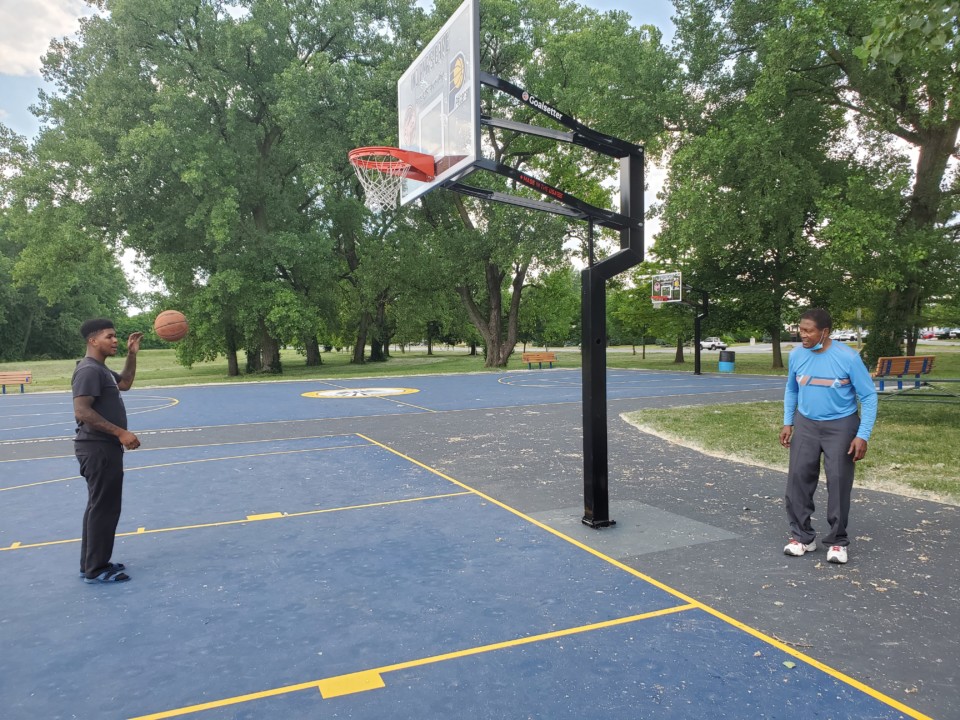 Now he’s one to give them. He used to ride a bicycle from his home with a ball tucked into a backpack, holding a whistle in his mouth to toot at pedestrians on the sidewalk if they didn’t see him approaching from behind. The Dust Bowl DNA remains in his soul. Sitting under a shade tree on a park bench and talking to young people is as good a way as any for him to have impact. He might put up a few shots from close range now and then but he’s more interested in watching kids do what he did more than 70 years ago.
Now he’s one to give them. He used to ride a bicycle from his home with a ball tucked into a backpack, holding a whistle in his mouth to toot at pedestrians on the sidewalk if they didn’t see him approaching from behind. The Dust Bowl DNA remains in his soul. Sitting under a shade tree on a park bench and talking to young people is as good a way as any for him to have impact. He might put up a few shots from close range now and then but he’s more interested in watching kids do what he did more than 70 years ago.
It’s a different environment. AAU competition absorbs the best players, so those playing in a park are likely less serious about the game. Sometimes it’s just a place to hang out. Bryant says he once broke up an argument between two kids who were carrying guns. They knew him from his previous appearances at the park and they listened.
“I said, ‘Come ooooon!’” he recalls. “I was scared, but I told them that showing strength is not being involved in that. You should hug the guy and shake hands. I’m sure I’ve saved some lives out here because these guys will go get a gun in a minute.
“That’s all we can do is pass it on. Pick your spots and pass it on.”
Tagged with: Branch McCracken, Hallie Bryant, Harlem Globetrotters, Oscar Robertson
 Indiana basketball
Indiana basketball Indiana Mr. Basketball
Indiana Mr. Basketball IU basketball
IU basketball